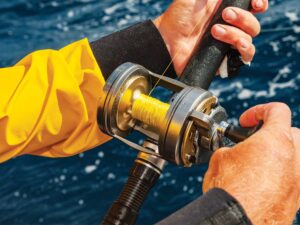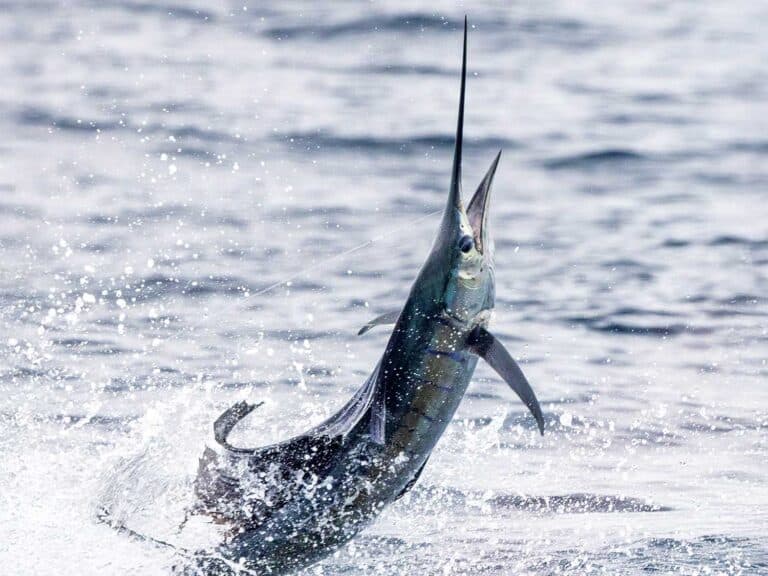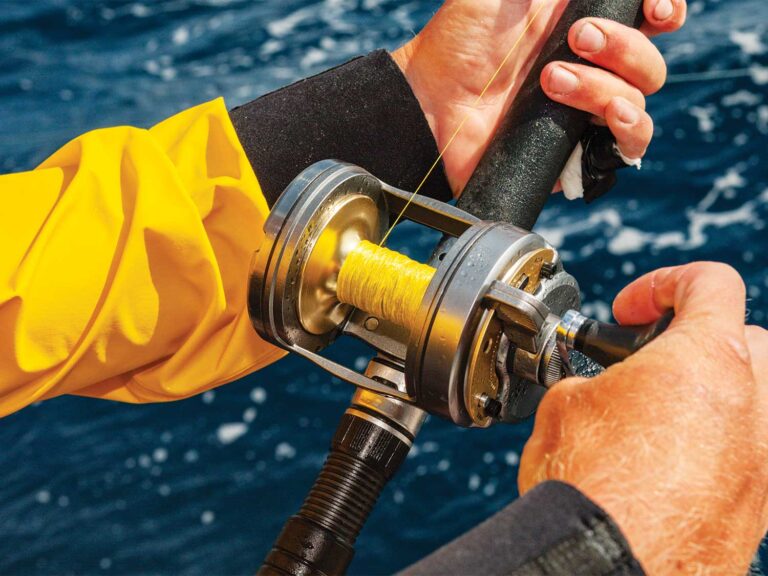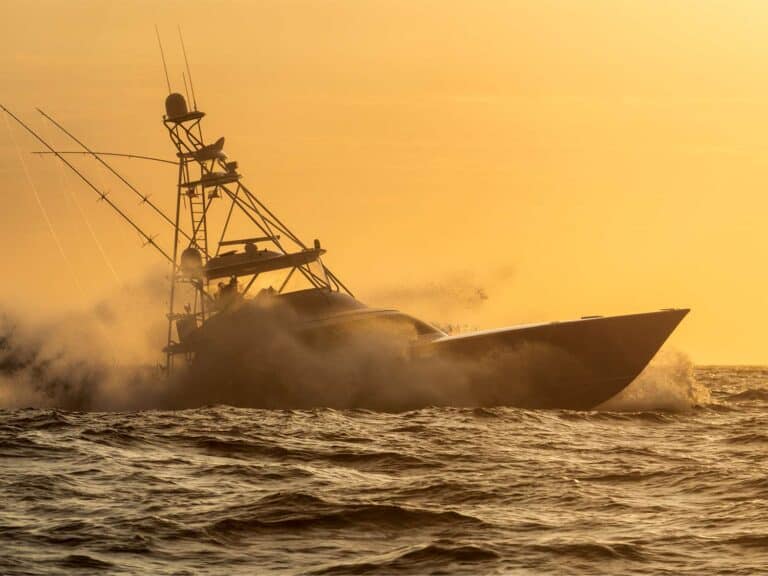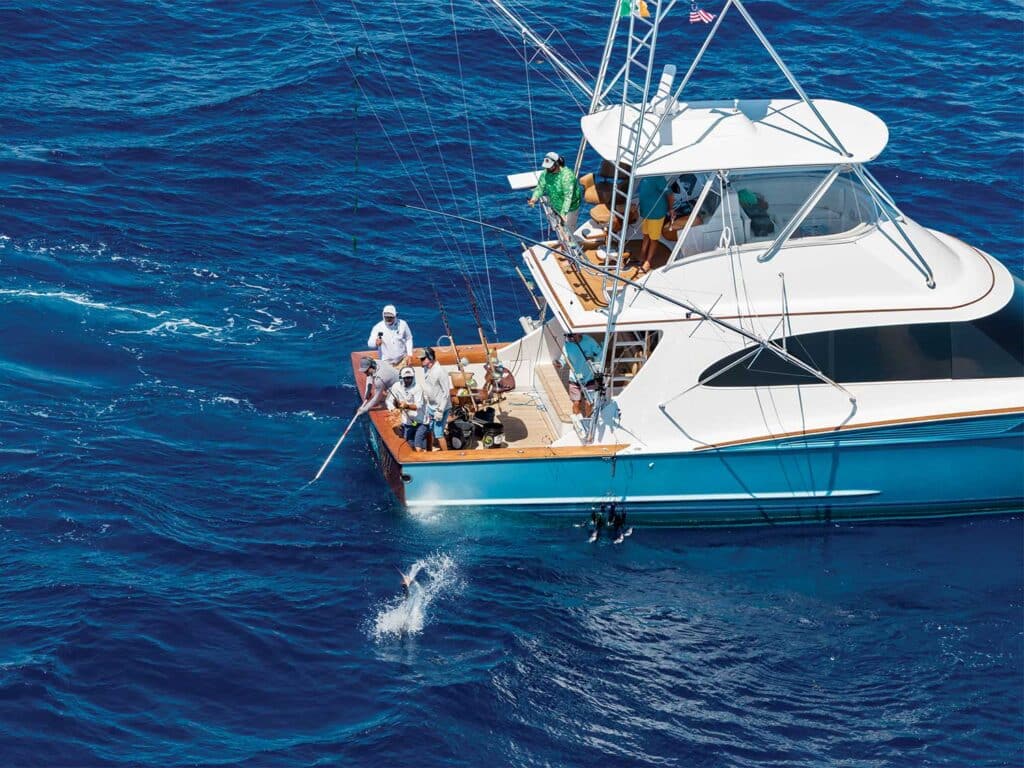
Subscribe to Marlin magazine and get a year of highly collectible, keepsake editions – plus access to the digital edition and archives. Sign up for the free Marlin email newsletter.
Billfish tournaments have always had a degree of the honor system in their rules. The honor system is a neat thing if everyone is honorable. Unfortunately, there are still folks who push the limits of the rules and even those who are downright dishonest. But all in all, there are very few of those bad seeds, and they tend to be rooted out pretty quickly by fellow participants.
A classic case of outright cheating occurred back in the mid-60s at the Atlantic City Marlin Tournament. A boat called Sweet Pea owned by a doctor who was fishing with his kids showed up to the dock at weigh-in with a white marlin that had been frozen. Keen-eyed weighmasters and experienced onlookers noticed the discolored eyes and gills and the overall texture of the fish.
The good doctor was castigated as a cheater, disqualified forever as his horrid tale spread quickly through the offshore-fishing community. Up and down the coast the small but tight-knit sport-fishing community knew of his foul act. I can remember years after the unfortunate incident hearing the radio crackle with the name Sweet Pea calling in a fish to the committee boat as a joke. Folks in attendance were truly aghast and disgusted at the actions of the doctor especially with his children aboard. Not a shining example of sportsmanship or honor, to be sure.
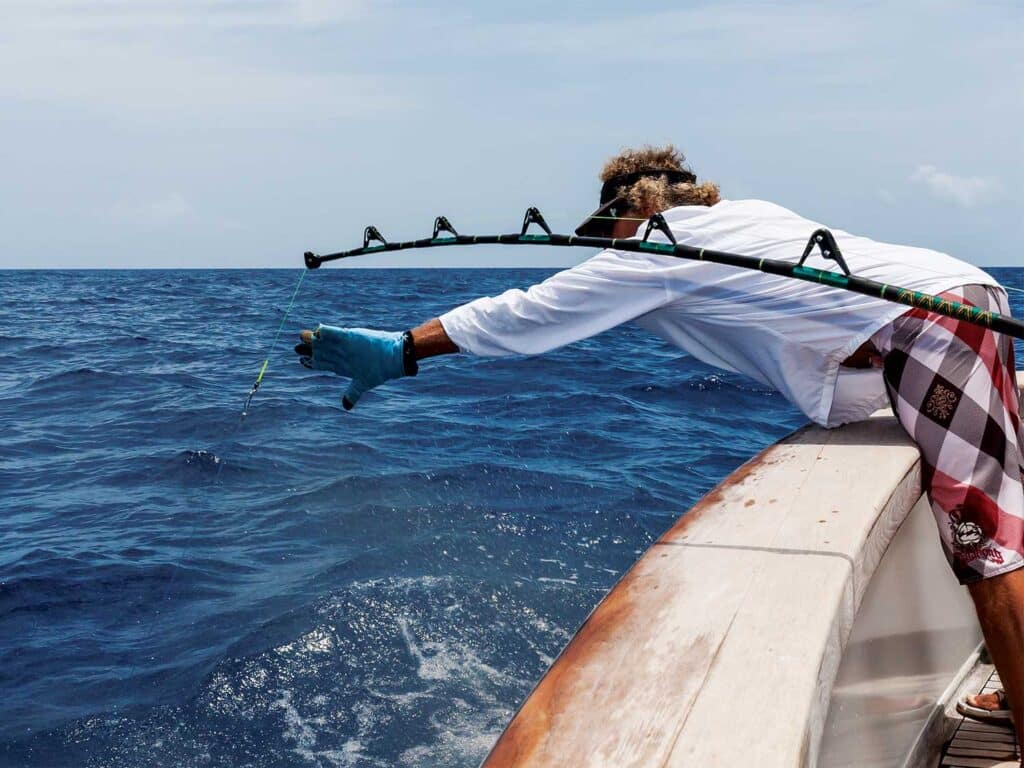
The Switch to Video
We talk all the time about technology in sport fishing. The technology revolution hit the outdoor-recreation arena quickly with the advent of small, robust, affordable cameras led by GoPro. These reasonably priced tools brought the ability to capture whatever action is recorded by the participants and even sometimes from their viewpoint. Then came the camera phone and all its recording capabilities at a moment’s notice, selfies included.
One of the coolest things to come along for billfish tournaments is the ability to use this technology for release categories that offer prize money. Even before their integration into tournaments, folks were using them to capture exciting footage while anglers were fighting fish. These cameras with their waterproof construction could now also be put into the water to get a solid ID on the species.
Savvy tournament directors quickly realized the benefit of having crews submit footage of their catches to confirm releases, thereby creating a release division where money, not just pickle dishes, could be offered for prizes. This really caught on in the South Florida sailfish tournament circuit, and it wasn’t long before it spread to other events in the Bahamas, the Caribbean and Central America.
Capt. Skip Smith quickly adopted video technology for his Custom Shootout in the Bahamas with great success, fulfilling the mission of conservation with catch-and-release fishing. Immediately he saw the value in utilizing video verification to distinguish between a large white marlin and a small blue, a task that is made especially difficult in the morass of fighting multiple fish at once. Positive ID keeps the scoring accurate.

At the oldest white-marlin tournament in the world, it took some convincing, but as a committee member of the Beach Haven White Marlin Invitational, we were able to integrate video verification into our release division for white marlin. In our doing so, it became the first mid-Atlantic East Coast tournament to integrate a prize-money release division.
After a bit of rumbling from some crew unwilling to add the minimal workload to their day, video footage quickly became the standard in big-game fishing tournaments. Knowledgeable crews saw the benefits and quickly integrated video-capturing systems onboard their rigs. Sure, it took some time to work out the kinks, but it surely has increased participation and brought a whole bunch more opportunities for boats to win some money.
Naturally, there are countless stories where the failure of equipment, batteries not fully charged or, even more so, operator error has thrown a wrench in the works for some teams, even costing teams millions of dollars in prize money.
With decades of experience both fishing and running tournaments, here are some simple things you can do to prevent adding your name to that unpopular list.

Know the Rules
While most tournaments employ IGFA rules as a base platform for rule keeping, it is very common for tournaments to deviate from strict adherence to these rules. In other words, even if you are familiar with IGFA rules, it behooves you to know the exact rules of the tournament, as they may differ.
Perhaps the most common example of this deviation from IGFA rules is the acceptance of hook-and-hand by most tournaments. But that’s not it. Things such as mates grabbing the rod to get the leader or adjusting the drag are IGFA rules infractions, and they happen more often than you can imagine. Those particular problems are bad habits usually developed from non-tournament and charter fishing. Mates routinely grab the rod tip to pull it closer to get the leader. Additionally, the common practice of hastily snatching or popping the leader of a fish that is not near the boat could be viewed as improper fish handling.
When looking at the actual language from Smith’s tournaments, which is basically the standard for most big-game tournaments, you can see how the committee’s interpretation of a release may differ from the everyday actions of an uninformed crewmember. “A billfish is considered released when a) the swivel between the main line or double line and leader hits the rod tip, b) the mate grabs the leader, or c) the wind-on leader comes through the rod tip.” He then adds, “Please release the fish in good condition by either removing the hook-set or cutting the leader as close to the hook-set as possible. Popping the leader is not a good method of healthy release, and we ask that you refrain from doing so.”
This brings us to the requirements for capturing the proper video for a catch to count. Again, just as is the case with the rules, having a firm grasp on the video requirements prior to entering the tournament is essential. Nowadays it’s fairly universal for most tournaments to require time- and date-stamped footage showing the following items: 1) the registered angler fighting the fish, 2) some sort of daily identification marker, 3) the full fish to accurately identify the species, and 4) the fish being properly released.
But once again, participants must be aware that each tournament has its own rules. A good example of this is the highly successful Quest for the Crest trilogy of sailfish tournaments by Bluewater Movements and Jaime Bunn. Among other things, Bunn requires participants to submit all footage on SD cards only, and that continuous video sequence is maintained throughout the entire fight.
Ensuring you capture the right tournament footage begins before you even pick up the camera. Make sure you and your crew have a solid understanding of the tournament rules and video requirements well before lines in.
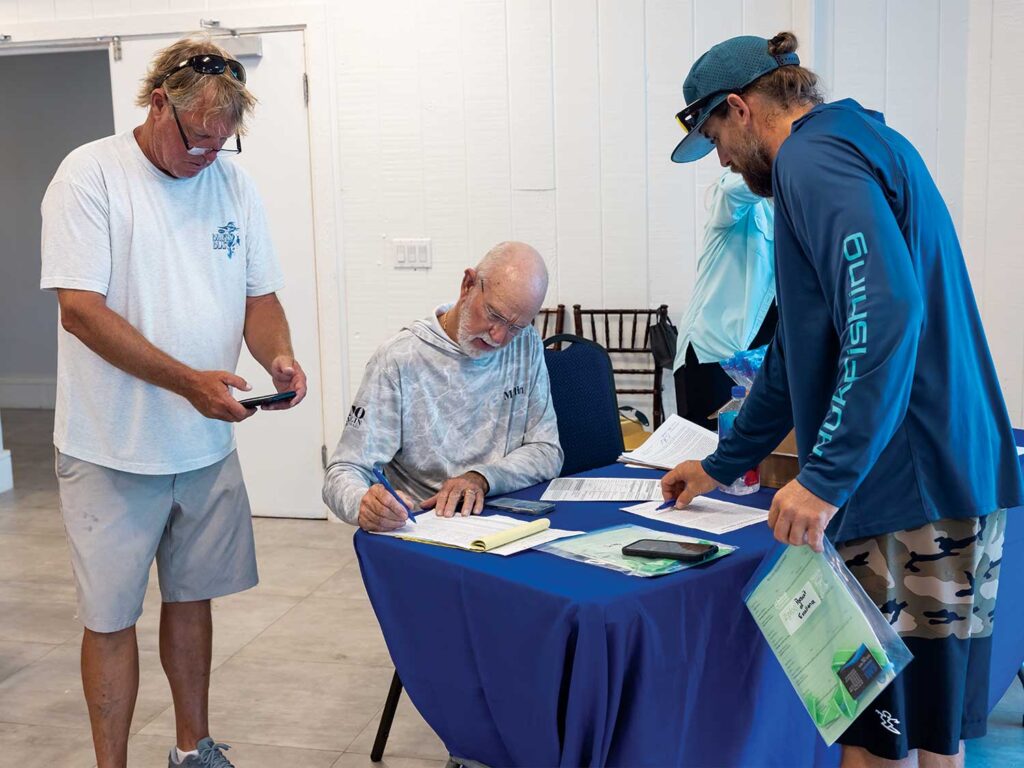
Be Overprepared
It takes good preparation and focused attention to capture the proper release sequence for a fish to count. And that process starts with good gear. GoPro, undoubtedly the most prominent brand on the market, offers robust camera solutions that are universally accepted and for the most part intuitive for the user. Multiple cameras recording is essential to be certain that a fish counts for a score. No matter what brand of camera you use, be sure to have multiple batteries ready to go and a new memory card for each day for each camera, with several spares—sometimes they fail.
Set the cameras to one-touch record to avoid having to power up before hitting record. If possible, be sure the cameras have a float on them. In one horrible story, a crewman of mine was fishing in a sailfish event, and the camera snapped off the underwater stick, and they watched their entire day’s catch sink to the bottom, losing at the very least a daily payout. I highly recommend a wrist strap for handheld cameras as well. There have been several incidents of cameras flying overboard in rough conditions or a flurry of action.
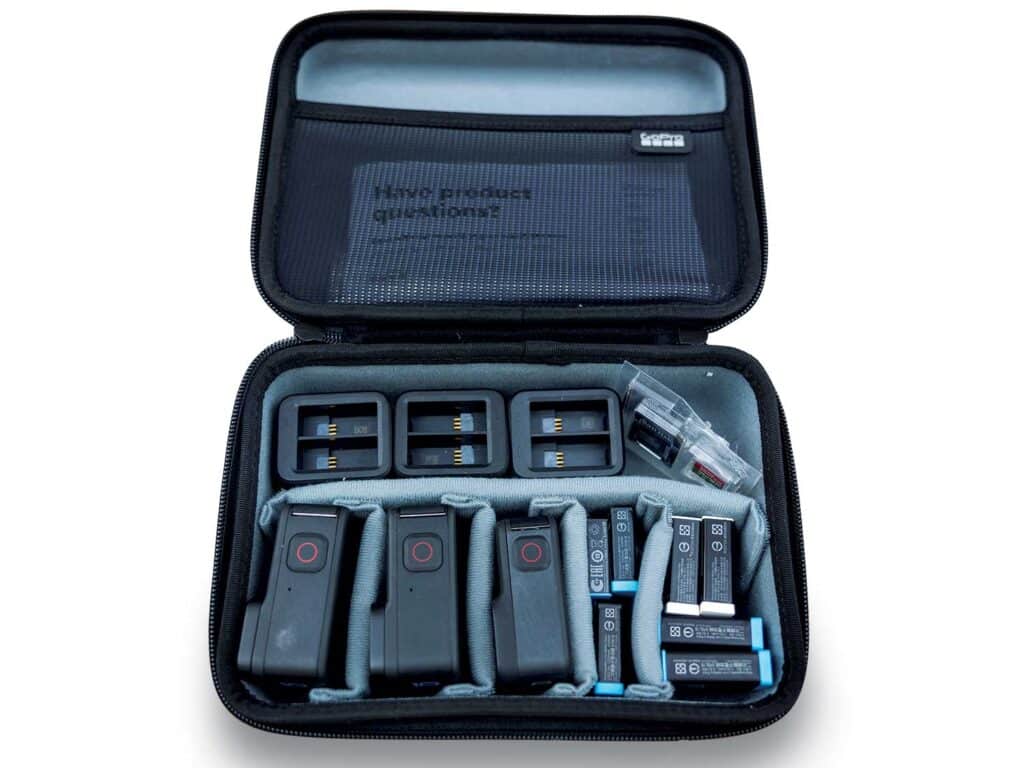
Most professional teams have at least one person, often paid, who is dedicated to the video capture of each catch. Giving a guest who is unfamiliar with the confirmation needs, and possibly not too seaworthy, is not a good solution. Always have one person who grabs the second camera and starts recording. We have a third camera on a gyro, mounted on the bridge rail, to capture the entire cockpit and all the action as an overall wide-shot backup. Like many other folks, we have a fourth camera on an AFTCO stick set to one-touch record and in upside-down mode to put in the water to be absolutely sure we get positive ID. Every morning, we start each camera, record the day’s marker and confirm the time stamp is correct.
With your underwater camera, be sure to have a sturdy pole to mount it on. In rough conditions, the stress and speed of things happening requires some stout gear. A simple selfie stick will not cut it. A good carbon-fiber extendable monopod is a good solution to get under the water for a good ID. Be sure to get a thin one so the effects of water drag on the stick will be minimized.

Obviously, caring for the equipment by washing it, drying it, cleaning lenses and spraying lubricant on any metal hinges or threaded connectors at days’ ends will help keep your gear operating smoothly and properly every day for several seasons. I have several Pelican cases with cutouts for cameras, batteries, chargers, memory cards and other gear so our kit is always ready and up to date. We bring many extra memory cards, as it’s never easy to get them back once turned in to the tournament committee. Most tournaments clearly state the footage becomes the property of the tournament, so be careful what you submit!
Using video verification is a great way to ensure that release-based fishing is fair for all participants. It also creates additional prize categories, so there are more opportunities to cash a check. And for better or worse, video footage has changed our sport and is seemingly here to stay. It really is not a hassle at all. Knowing the tournament rules and video requirements, investing in the right gear, and making sure your anglers and crew are prepared all just become part of the job, and a part that can pay off in a big way.
